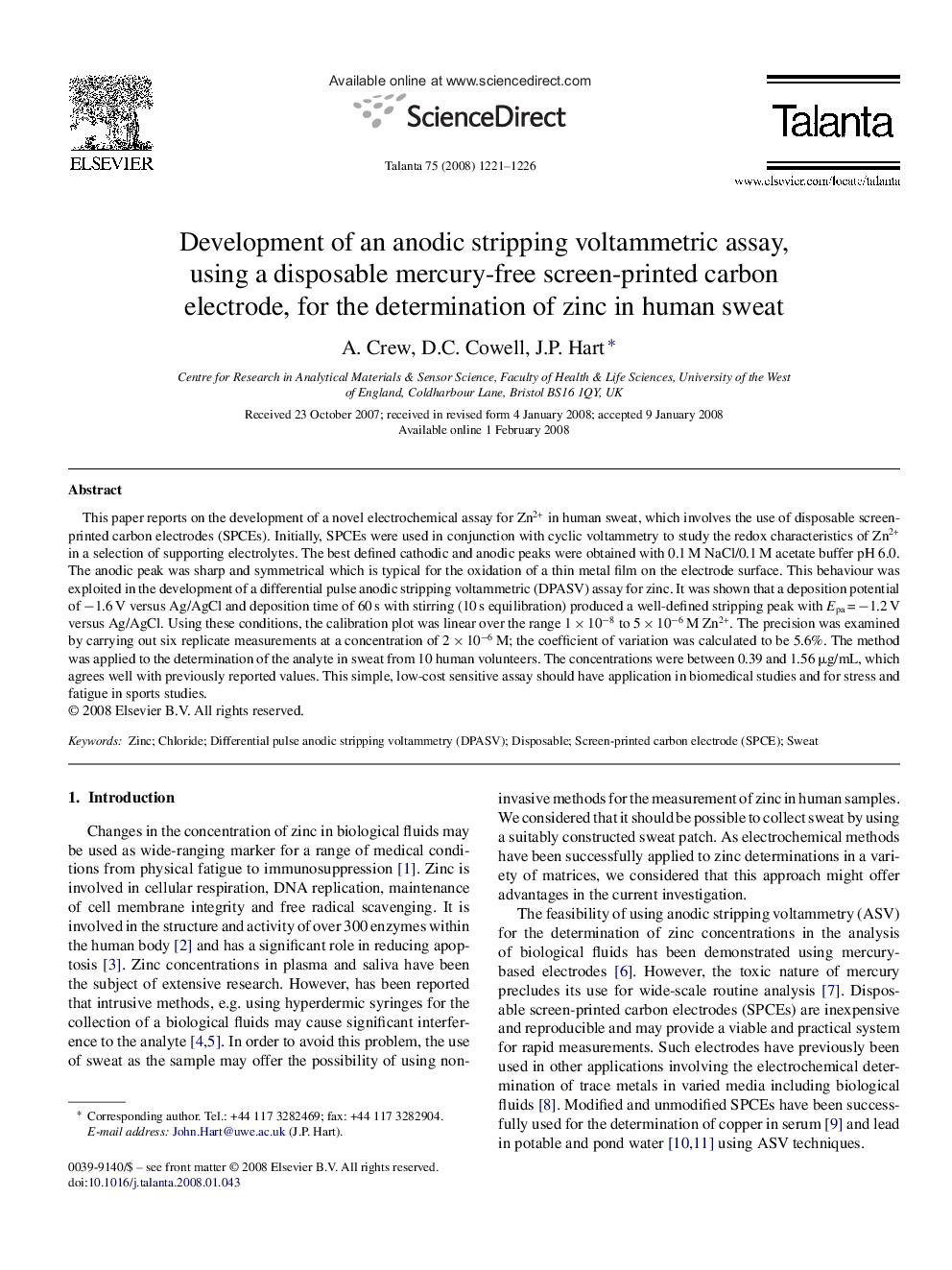| Article ID | Journal | Published Year | Pages | File Type |
|---|---|---|---|---|
| 1244294 | Talanta | 2008 | 6 Pages |
This paper reports on the development of a novel electrochemical assay for Zn2+ in human sweat, which involves the use of disposable screen-printed carbon electrodes (SPCEs). Initially, SPCEs were used in conjunction with cyclic voltammetry to study the redox characteristics of Zn2+ in a selection of supporting electrolytes. The best defined cathodic and anodic peaks were obtained with 0.1 M NaCl/0.1 M acetate buffer pH 6.0. The anodic peak was sharp and symmetrical which is typical for the oxidation of a thin metal film on the electrode surface. This behaviour was exploited in the development of a differential pulse anodic stripping voltammetric (DPASV) assay for zinc. It was shown that a deposition potential of −1.6 V versus Ag/AgCl and deposition time of 60 s with stirring (10 s equilibration) produced a well-defined stripping peak with Epa = −1.2 V versus Ag/AgCl. Using these conditions, the calibration plot was linear over the range 1 × 10−8 to 5 × 10−6 M Zn2+. The precision was examined by carrying out six replicate measurements at a concentration of 2 × 10−6 M; the coefficient of variation was calculated to be 5.6%. The method was applied to the determination of the analyte in sweat from 10 human volunteers. The concentrations were between 0.39 and 1.56 μg/mL, which agrees well with previously reported values. This simple, low-cost sensitive assay should have application in biomedical studies and for stress and fatigue in sports studies.
